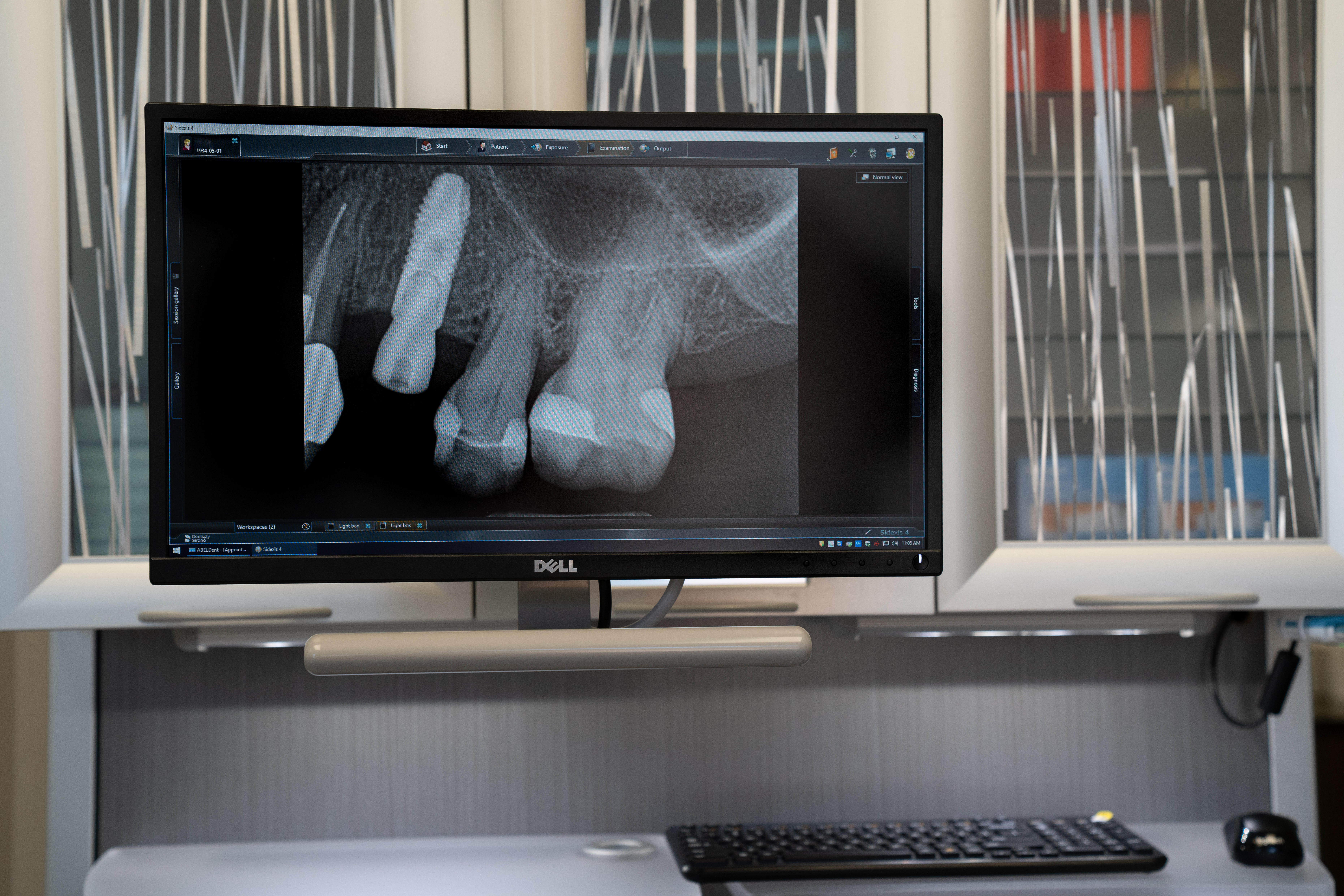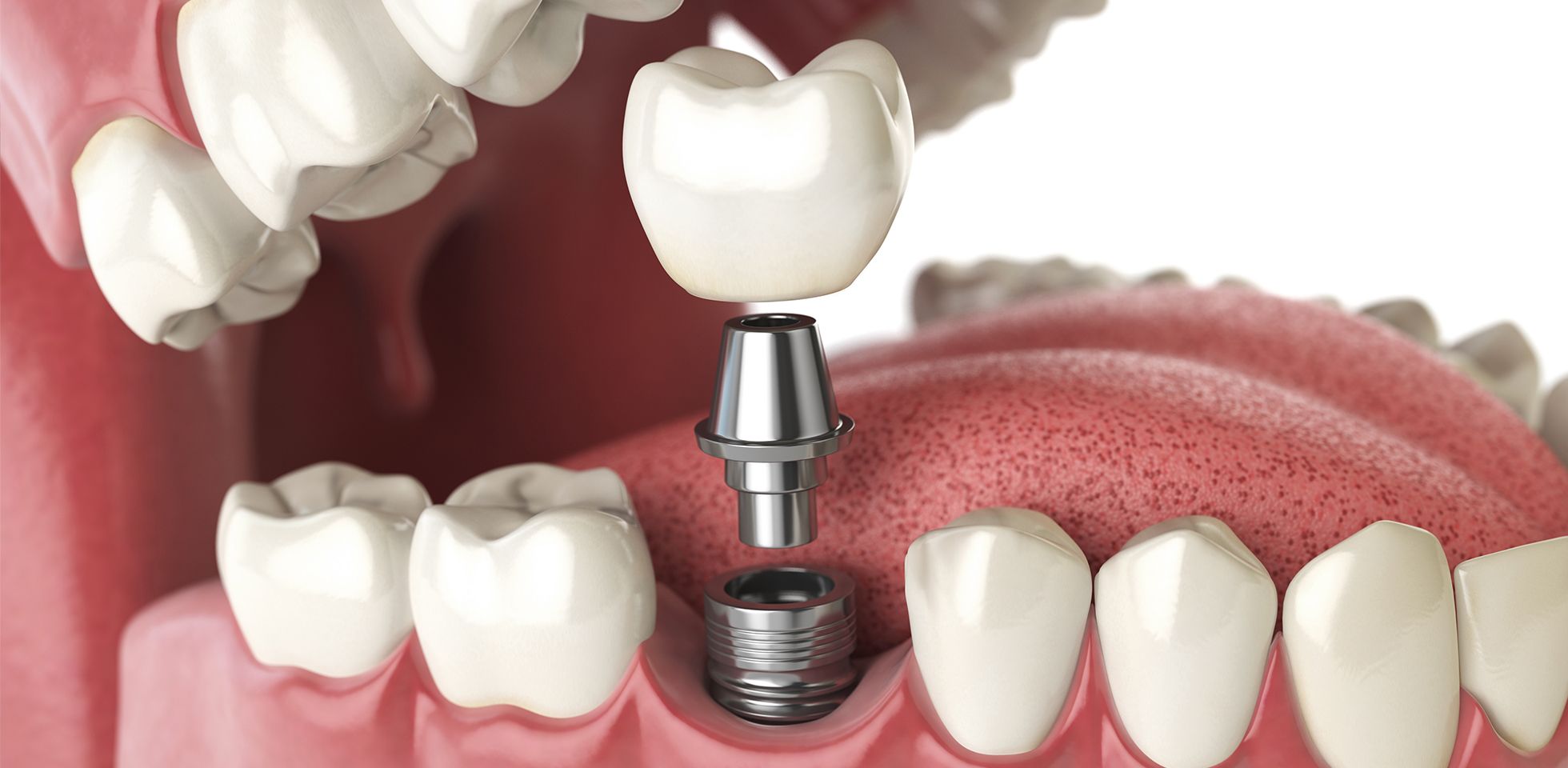Dental Implant
Dental implants are the closest possible alternative to actual tooth replacement. With proper care, maintenance, and regular checkup visits with your dentist, dental implants are designed to last for life.
A standard implant can be used to replace a single tooth, or two implants can be placed to create a bridge without impacting surrounding teeth. Many people with implants can’t tell the difference between their natural teeth and their implants, and neither can their friends and family.

What are the steps involved in getting a dental implant?
Modern techniques in dental implant technology have made implants a standard procedure in dental offices. Dental implants are usually completed in two steps:
- Implant Placement: The dentist places the implant surgically in the upper or lower jaw. A “healing cap” is placed over the implant to protect it. Sometimes, bone grafting may be required before or during implant placement. Healing then has to occur. Implants are strong because the bone in the jaw actually grows around the implant, anchoring it into place and accepting it as a part of the bone. This is a critical step in the implant process. The healing process typically takes about 3 months.
- Tooth Replacement: The dentist will have a custom crown, bridge made to fit your mouth and implants.

Immediate Implants
Some patients are candidates for immediate implants which involves placing an implant directly into the extraction socket immediately following tooth removal. It is imperative that the extraction of the failing tooth be performed very carefully and without damage to the surrounding gum and bone tissue. This is known as an “immediate” replacement implant. Traditionally the socket is allowed to heal and fill in with new bone first before an implant is placed into it. The traditional wait time for getting a tooth on an implant is 6-7 months after an extraction.
The benefit to having an implant placed “immediately” is that only a single surgical procedure is necessary as opposed to two separate procedures, thus saving 3-4 months time before receiving your new tooth. Implant success is dependent upon initial stabilization, meaning there should be no movement of the implant at all. This is critical to the fusion of the implant with the bone.
